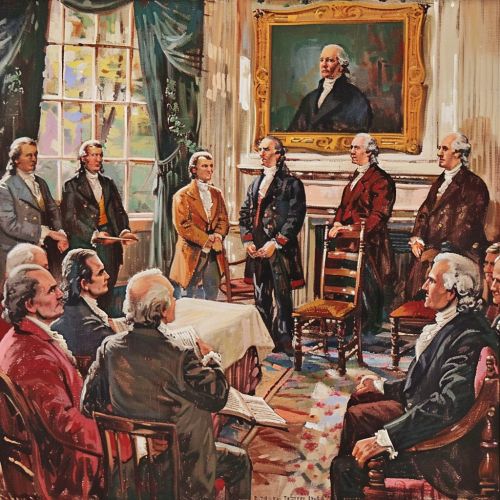Constitutional Convention
Origins of the Convention
The Revolutionary War had left the United States in a state of political instability. The Articles, the nation's first constitution, proved to be inadequate in providing a strong central government. This led to the call for a Constitutional Convention in 1787.
The Delegates
The Convention was attended by 55 delegates from 12 of the original 13 colonies, with Rhode Island being the only exception. These delegates were a diverse group, including lawyers, soldiers, and politicians. Among the notable attendees were George Washington, Benjamin Franklin, and James Madison, who is often referred to as the "Father of the Constitution".

The Virginia Plan
The Convention began with the presentation of the Virginia Plan. This plan proposed a bicameral legislature, with representation based on population. It also suggested a strong executive branch and a judiciary with life tenure.
The New Jersey Plan
In response to the Virginia Plan, the smaller states proposed the New Jersey Plan. This plan advocated for a unicameral legislature with equal representation for all states, regardless of size or population.
The Great Compromise
The impasse between the large and small states was resolved with the Great Compromise. This compromise proposed a bicameral legislature with representation based on population in the lower house and equal representation in the upper house.
The Three-Fifths Compromise
Another major issue was the representation of slaves. The Three-Fifths Compromise was reached, which stated that three-fifths of the slave population would be counted for representation and taxation purposes.
The Constitution
The final product of the Convention was the United States Constitution. This document established a strong central government with three branches: the executive, the legislative, and the judicial. It also included a system of checks and balances to prevent any one branch from becoming too powerful.
Ratification
The Constitution was signed on September 17, 1787, but it still needed to be ratified by the states. The process of ratification was a contentious one, with many fearing that the new Constitution gave too much power to the central government. The addition of the Bill of Rights helped to alleviate these fears and the Constitution was eventually ratified.
Legacy
The Constitutional Convention has left a lasting legacy on the United States and the world. The Constitution it produced has served as a model for many other nations and remains the supreme law of the United States to this day.
